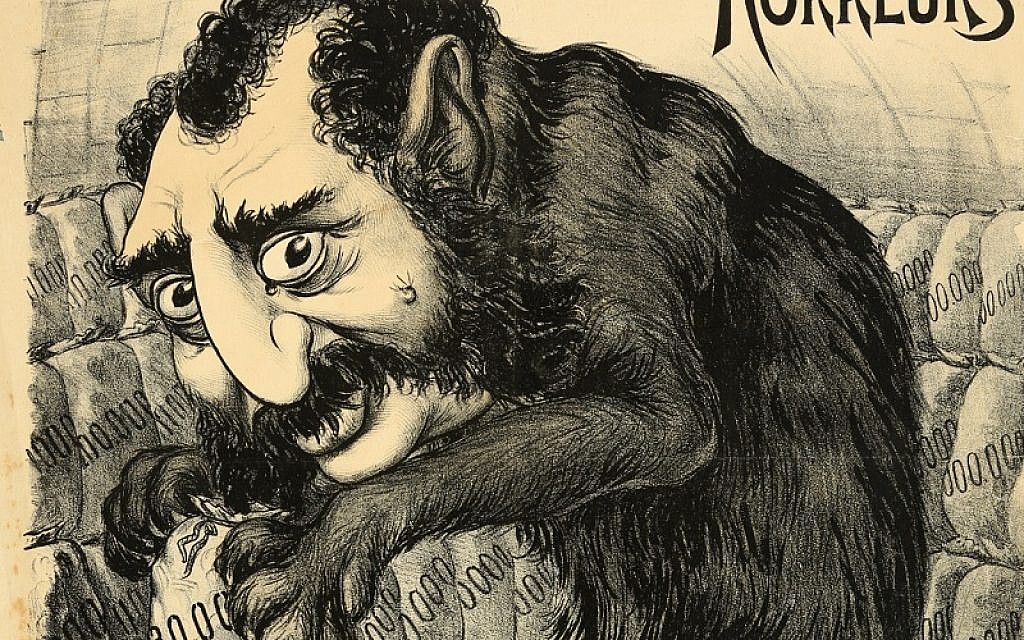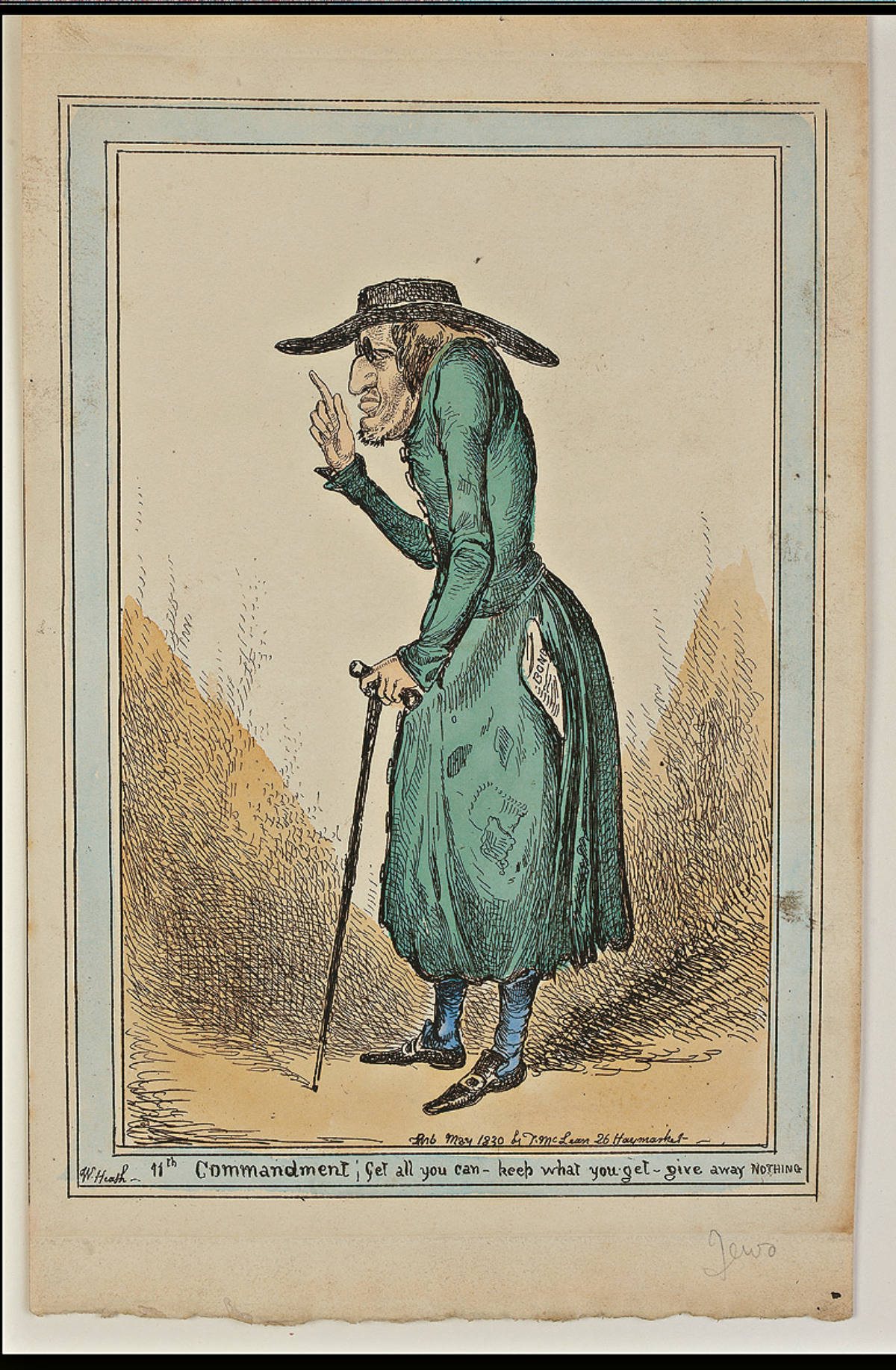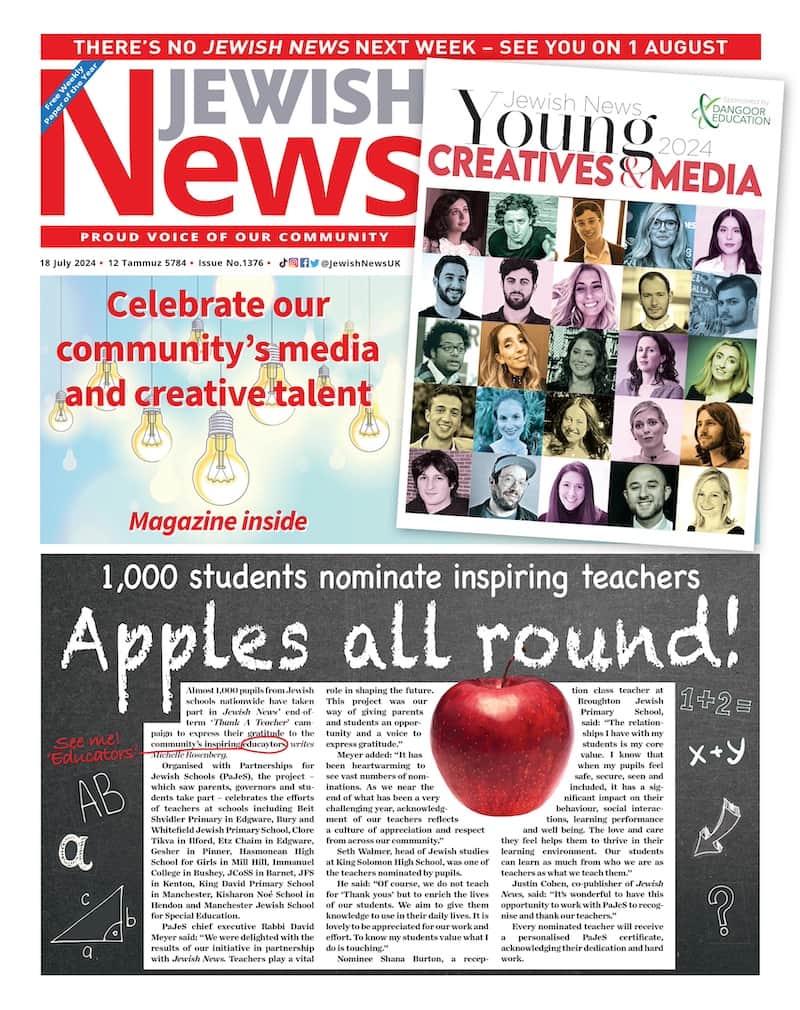Not right on the money! New exhibition unravels stereotypes about Jews
Jewish Museum London launches Jews, Money, Myths to dispel antisemitic notions all Jews are moneylenders and bankers...or are wealthy

From the depiction of a devilish Judas Iscariot, who betrayed Jesus for a mere 30 pieces of silver, to cartoons of hook-nosed moneylenders and gluttonous bankers rubbing their hands together in glee, Jews have long been victim to harmful stereotypes about money.
So powerful is this idea, that even today’s Oxford English Dictionary still defines the word “Jew” to mean “a grasping or extorting person (whether Jewish or not), who drives hard bargains”, or as a verb, “to cheat”.
That was just one of the many surprising revelations that feature in Jews, Money, Myth, a new exhibition at the Jewish Museum London, which attempts to unravel fiction from reality.
Get The Jewish News Daily Edition by email and never miss our top stories Free Sign Up
Starting with the stereotypes, a medieval tax document on loan from the National Archives contains a hand-drawn picture of three of England’s wealthiest Jews in the 13th century, including a man named Moshe, a woman named Avigail and the well-known Isaac of Norwich.
They are surrounded by nefarious-looking individuals with horns, long noses and ferocious teeth, who are balancing scales and most likely committing some unethical act, such as coin-clipping or counterfeiting.
Anthony Bale, professor of medieval studies at Birkbeck, University of London, who worked as an adviser on the exhibition, says: “At the National Archives in Kew, anyone wanting to view this document would have to do so in the same secure room where people look at documents related to terrorism, pornography or murder, because it is so controversial. It’s quite possibly the earliest anti-Jewish caricature ever recorded.”

Bale also reveals that while the document insinuates moneylending was a typically “Jewish” profession in the middle ages, the reality was quite different.
“Actually, only a tiny proportion of Jews lent money. It’s a complete myth that it was an exclusively Jewish trade, but one that was very powerful and enduring.”
Those who were not involved in finance struggled to pay taxes to the crown and relied on communal charity, while those who did have money were often forced to hide their wealth, as evidenced by the remains of a hoard of coins found in Colchester that was likely buried by a Jewish owner.
“It shows that even though you could have a lot of money physically, you were not necessarily any more powerful or secure as a Jew in England,” Bale adds.
Medieval antisemitism was in part driven by religion, with the Church leading the attack on Jews for being unethical money-grabbers.
One of the highlights of the exhibition however shows not everyone followed this idea.
A rarely-seen early painting by Rembrandt, dated 1629, depicts the lesser-known Bible story of Judas attempting to return the money he had taken. Distraught and penitent, Judas pleads with the priest for forgiveness.
Yet the image of the greedy, thieving Jew continued to be all-pervasive. Moving through the exhibition to the “bankers and beggars” section, an array of antisemitic material shows how Jews came to be attacked for being both rich and poor.
A particularly grotesque 19th century sculpture by French artist Jean-Pierre Dantan depicts Nathan Rothschild as a hideous beast clutching money, with his bulging eyes and growling face. It’s so offensive that the museum opted to turn the figure around, so as not to immediately startle visitors who come across it.

Equally provocative is an 1830 caricature of a Fagin-like figure, with the caption: “11th Commandment: Get all you can, keep what you get, give away nothing”, suggesting that ruthlessness and greed are significant in Jewish teaching.
But it’s not just the moneylenders, merchants and billionaires highlighted by the exhibition. It shows too how in reality many Jews have struggled financially over the centuries and how the concept of tzedaka has huge importance to Jewish life.
“Despite the myths surrounding Jews and money, most Jews throughout history haven’t been rich,” says curator Jo Rosenthal, pointing to a letter written by a blind man appealing to his community for help in 11th century Alexandria. “When we talk about money, Jewish poverty often gets overlooked.”
Moving into contemporary history, the exhibition explores how conspiracy theories began to evolve around the idea of Jews controlling the world for financial gain, starting with The Protocols of the Elders of Zion, a fabricated antisemitic text.
Professor David Feldman, director of the Pears Institute for the study of antisemitism, who also helped develop the exhibition, explains: “The protocols are often associated with Nazi Germany, but they were actually published in a British daily newspaper, The Morning Post, in 1920. Their circulation rose considerably during the time when they were published.
“Even those who didn’t believe this, still came out with other Jewish conspiracy theories, including that Jews were behind the French and Russian revolutions. Winston Churchill wrote an article shortly afterwards saying just that, while the Dean of Westminster dismissed the protocols, but said Jewish money was in league with German money during the First World War in an effort to take over Russian industry.”

Jewish conspiracy theories continue today. One section lays out in detail how American multi-billionaire George Soros has become a victim of multiple false accusations, from orchestrating financial crashes and political coups to being a Nazi collaborator.
Like other exhibits, the section on Soros makes for uncomfortable but necessary viewing, according to Dr Marc Volovici, research fellow at the Pears Institute for the study of antisemitism.
“Talking about stereotypes is in a way allowing them more presence, but at the same time it’s hard not to address them without first understanding them.”
Jews, Money, Myth runs at Jewish Museum London until 7 July. Details: jewishmuseum.org.uk

Thank you for helping to make Jewish News the leading source of news and opinion for the UK Jewish community. Today we're asking for your invaluable help to continue putting our community first in everything we do.
For as little as £5 a month you can help sustain the vital work we do in celebrating and standing up for Jewish life in Britain.
Jewish News holds our community together and keeps us connected. Like a synagogue, it’s where people turn to feel part of something bigger. It also proudly shows the rest of Britain the vibrancy and rich culture of modern Jewish life.
You can make a quick and easy one-off or monthly contribution of £5, £10, £20 or any other sum you’re comfortable with.
100% of your donation will help us continue celebrating our community, in all its dynamic diversity...
Engaging
Being a community platform means so much more than producing a newspaper and website. One of our proudest roles is media partnering with our invaluable charities to amplify the outstanding work they do to help us all.
Celebrating
There’s no shortage of oys in the world but Jewish News takes every opportunity to celebrate the joys too, through projects like Night of Heroes, 40 Under 40 and other compelling countdowns that make the community kvell with pride.
Pioneering
In the first collaboration between media outlets from different faiths, Jewish News worked with British Muslim TV and Church Times to produce a list of young activists leading the way on interfaith understanding.
Campaigning
Royal Mail issued a stamp honouring Holocaust hero Sir Nicholas Winton after a Jewish News campaign attracted more than 100,000 backers. Jewish Newsalso produces special editions of the paper highlighting pressing issues including mental health and Holocaust remembrance.
Easy access
In an age when news is readily accessible, Jewish News provides high-quality content free online and offline, removing any financial barriers to connecting people.
Voice of our community to wider society
The Jewish News team regularly appears on TV, radio and on the pages of the national press to comment on stories about the Jewish community. Easy access to the paper on the streets of London also means Jewish News provides an invaluable window into the community for the country at large.
We hope you agree all this is worth preserving.
- Jewish Museum
- Jews Money Myth
- conspiracy theories
- First World War
- History
- Exhibitions
- Museums
- Winston Churchill
- Dean of Westminster
- george soros
- Marc Volovici
- Pears Institute
- Oxford English Dictionary
- National Archives
- Isaac of Norwich
- Anthony Bale
- Birkbeck
- Colchester
- Rembrandt
- Nathan Rothschild
- Judas
- Jean-Pierre Dantan
- Jo Rosenthal
- Alexandria
- The Protocols of the Elders of Zion
- David Feldman
- Features
-
By Brigit Grant
-
By Laurent Vaughan - Senior Associate (Bishop & Sewell Solicitors)
-
By Laurent Vaughan - Senior Associate (Bishop & Sewell Solicitors)
-
By Laurent Vaughan - Senior Associate (Bishop & Sewell Solicitors)
-
By Laurent Vaughan - Senior Associate (Bishop & Sewell Solicitors)





















